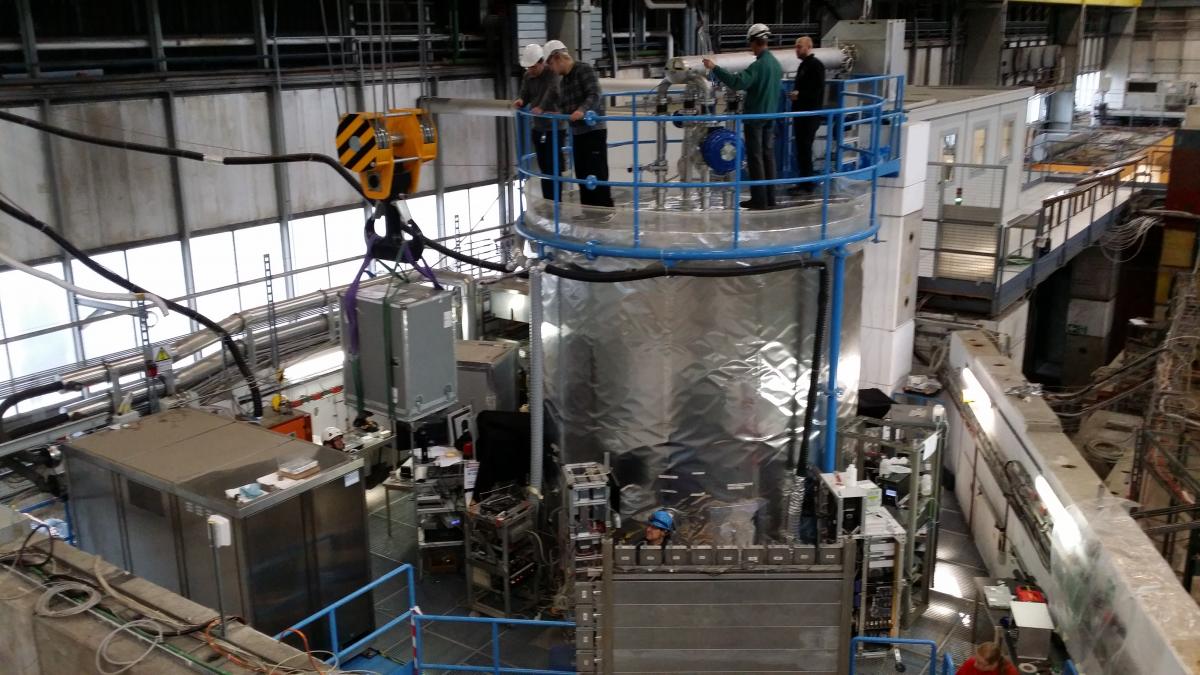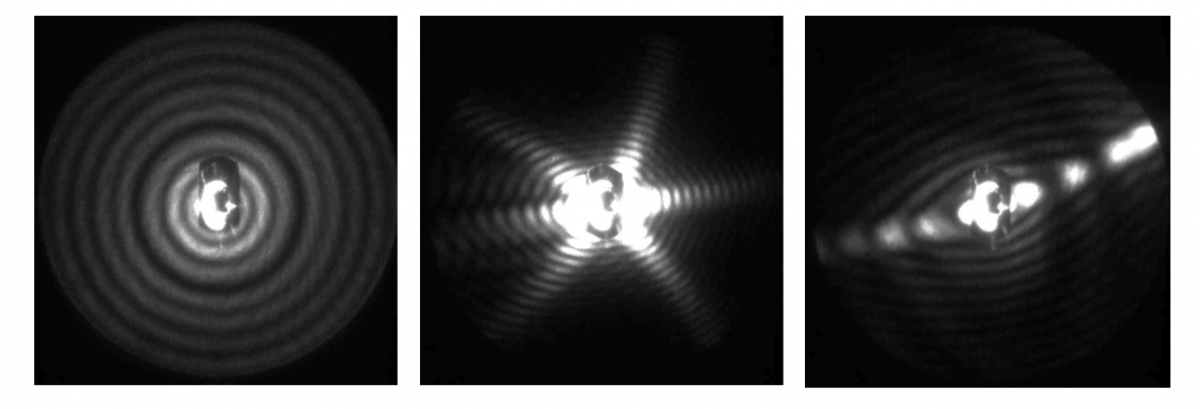CLOUD restarts experiments
On 21 September this year, CLOUD restarted experiments following the end of LS1 for the PS. Many thanks to Lau Gatignon and the PS team for their efficient re-commissioning of the beam. During LS1, in October-November 2013, CLOUD had carried out a series of experiments using cosmic rays. This run was highly successful and whetted our appetites for similar experiments this autumn using the PS beam.

Instrument de-installation at CLOUD on 3rd November following the first phase of experiments.
The experiments this year have used adiabatic pressure reductions to create clouds in the CLOUD chamber (pictured). Both water and ice clouds are produced. During the lifetime of each cloud, which lasts around ten minutes, precision measurements are made of how chemicals are processed inside cloud droplets, and whether these processes are affected by beam ionisation.
Adiabatic expansions at lower temperatures lead to ice formation. One set of experiments searched for the effects of ionisation on ice crystal formation and aggregation, which would influence the rate of rain formation in clouds. Other studies have focused on the potential of ions to affect the surface roughness of frozen droplets, which could affect cloud albedo since rougher ice crystals reflect more light than smooth ones. The ice particles shown below were imaged by the Particle Phase Discriminator at CLOUD in October.

Particle Phase Discriminator images of a cloud droplet (left), an ice plate (centre) and a column (right) recorded at CLOUD in October (Emma Jarvinen, KIT).
Further experiments this autumn focus on the formation and ice nucleating properties of glassy organic aerosol particles, and on additional studies of ion production from the beam in the CLOUD chamber. Quantifying the fate of the ions – either recombination with oppositely charged ions or by diffusional losses to the chamber walls - is particularly important to analyse the effect of ions on particle formation rates in the atmosphere.
Many of these experiments have been made possible by numerous upgrades of the CLOUD gas system during LS1 by PH-DT and other CERN technical staff, as well as new instrument developments by the CLOUD collaborators from across Europe and the US. Thanks to these efforts, CLOUD remains uniquely positioned to precisely reproduce and investigate ions, aerosols and clouds under tightly controlled atmospheric conditions in the laboratory.
Read more about the CLOUD experiment: http://cloud.web.cern.ch
